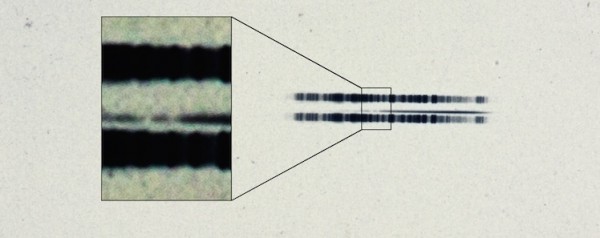By Ana Verayo, | April 15, 2016

The pull-out box shows the strong lines of the element calcium, which are surprisingly easy to see in the century old spectrum. The spectrum is the thin, (mostly) dark line in the center of the image. The broad dark lanes above and below are from lamps u
In the most stunning discovery yet, scientists found the oldest manmade evidence of a distant planetary system with possible exoplanets, that has been locked away for almost 100 years, on a piece of glass relic.
This evidence was made by an astronomer, Adriaan van Maanen in 1917, to record data of a star which is now known to be a white dwarf, using a 60 inch telescope at the Mount Wilson Observatory in California. Before the advent of digital technology in astronomy, scientists utilized glass photographic plates to record elements during their observation of stars.
Like Us on Facebook
Scientists at the time were not aware that this old form of technology actually contained pivotal clues about that star containing other planets or asteroids in its system.
After almost a century later, Jay Farihi from the University College London, was able to obtain for this specific photographic glass plate from John Mulchaey who is the current director of Carnegie Observatories, where an archivist was able to locate this relic from almost 250,000 plates housed in the observatory's basement.
Upon closer examination, the spectrum that was captured on the plate from long ago revealed that there is calcium along with many other heavy elements that a white dwarf would not normally possess, which suggests that planets, asteroids or comets could have fallen into it.
Mulchaey says that this system most likely contained multiple planets, although we do not know what fell in, but it implies that there is a presence of planets in that system. Now, scientists classify this type of star as a "polluted" white dwarf.
Scientists are almost certain of these planets since the evidence of calcium that registered in this old technology is a telltale sign that this would be possible. Mulchaey says that this is not only a tiny amount of calcium, making this a significant amount for detection, also adding up to the fact that this data is 99 years old.
A white dwarf is a dying star when its inner core is the only material left after it burned for billions of years, which will is also the same fate of our sun.
-
Use of Coronavirus Pandemic Drones Raises Privacy Concerns: Drones Spread Fear, Local Officials Say

-
Coronavirus Hampers The Delivery Of Lockheed Martin F-35 Stealth Fighters For 2020

-
Instagram Speeds Up Plans to Add Account Memorialization Feature Due to COVID-19 Deaths

-
NASA: Perseverance Plans to Bring 'Mars Rock' to Earth in 2031

-
600 Dead And 3,000 In The Hospital as Iranians Believed Drinking High-Concentrations of Alcohol Can Cure The Coronavirus

-
600 Dead And 3,000 In The Hospital as Iranians Believed Drinking High-Concentrations of Alcohol Can Cure The Coronavirus

-
COVID-19: Doctors, Nurses Use Virtual Reality to Learn New Skills in Treating Coronavirus Patients







